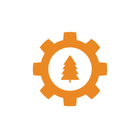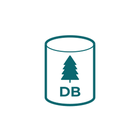Tree management in cities is essential for creating healthy, sustainable urban environments. Trees improve air quality, reduce heat, and enhance biodiversity while combating climate change by absorbing carbon dioxide.
Effective management ensures that urban forests are well-maintained and strategically planned, mitigating risks from pests and diseases. Healthy trees also enhance the aesthetic appeal of urban areas, creating inviting spaces that promote physical activity and community engagement.
Moreover, investing in tree management offers economic benefits by increasing property values, attracting tourism, and reducing stormwater management costs.
In summary, prioritizing tree management in cities fosters environmental health, social well-being, and economic vitality, creating greener, more resilient communities for current and future generations.

To deliver our analysis we conduct a new data collection to ensure analysis quality. In some cases existing data can be used if the data is of the right quality. Data is collected by drones, airplanes or satellites.

We process the images and generate up to date ortho photos of the city and height models. The data can also be used for 3D reconstruction and thereby be used for more processes in the organisation.

The photos and height maps are analyzed by our models to generate information about every tree. Giving the foundational database information about tree height, crown size, breast height diameter, and species group. We also create a create a tree damage map showcasing defect branches, standing and laying dead wood and other type of tree damages.

The data is stored in a database that can be connected to your GIS software and management platform. If a tree database already exists the data will be imported into the existing database which is then updated and expanded.
The data can then be used both in urban planning operations and field risk assessments. The database can be updated in the field with more important attributes of your choosing.
A city tree database maps and records all the trees in a city. It includes info like species, size, health, and location. This helps cities plan, maintain trees, track environmental changes, budget for tree care, get residents involved, and measure progress towards goals like 3-30-300 (3 trees per household, 30% canopy cover, and 300 meters to the nearest tree).
Want to know more about how your city can create a tree database or meet 3-30-300?